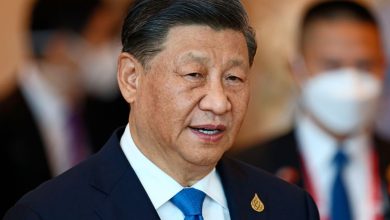As older workers begin to outnumber younger ones, here’s how companies and governments can adapt

[ad_1]
Babies born in the U.S. today are likely to live to be 76, on average, compared with just 47 in 1900. By 2040, life expectancy in the U.S. will climb to 79.8 years, according to the Institute for Health Metrics and Evaluation in Seattle. The U.S. today has more 60-year-olds than 6-year-olds.
The country’s aging workforce requires organizations to develop ways to retain and retrain older workers. Organizations also need to find a way to turn older adults into customers: by one estimate, the global cohort of people 60 and over represents a $22 trillion market opportunity.
Countries and organizations will have to address this remarkable demographic shift and learn to manage it going forward. However, few organizations seem to be focused on the aging workforce. Only an estimated 15% of organizations have a strategy that focuses on their aging workforce and a mere 4% have a retention strategy.
To make matters worse, for every two experienced (also older) workers who leave the workforce, one inexperienced worker enters. And all of this was before the pandemic.
Aging population, aging workforce
This aging segment of society is not only in the U.S., but globally. It has been estimated that the fertility rate needed to maintain the present workforce is 2.1—that is, women need to have slightly more than two children, on average, to sustain the current size of the workforce. This number takes into consideration births, deaths, immigration and emigration.
Several large countries in Asia and South America exceed that rate, as do most nations in sub-Saharan Africa, but none of the seven largest industrial countries, according to the World Population Review. The U.S. and United Kingdom come closest, at 1.7.
The bottom line is that because there are not enough young people to maintain the current workforce, mature or older workers are essential for organizations today and will continue to be so in the future.
Also read: Must be ‘fit and active’ or ‘digital native’: how ageist language keeps older workers out
Skilled worker shortage
As if the aging workforce was not enough, there is also a skills shortage that is currently impacting and will continue to impact organizations. There is a shortage of workers and this will only continue to grow. This was made worse by the the COVID-19 pandemic, which prompted 19 million workers to retire early or simply quit in the summer of 2021 alone.
The impact of losing so many workers helps to explain the unusual number of job vacancies in many parts of the economy: nearly a quarter-million in the IT and computer sector, over 600,000 in manufacturing, three-quarters of a million nurses and 30,000 pilots. In the case of pilots, the problem is made worse by the mandatory retirement age of 65.
Some organizations are taking proactive steps. As recently as 2022, more than half of employees in the U.S. embarked on significant retraining and skill improvement courses.
Also on MarketWatch: These new retirement communities sound ideal, so why do so many towns resist them?
Ageism is reinforcing myths
The situation is not helped by persistent myths about the aging workforce. Myths like the older workforce costs too much, training the workforce is not a good investment or older workers are less productive — none are supported by research.
Despite this, a recent study found that out of 10,000 organizations, two-thirds consider having an aging workforce a competitive disadvantage. This supports AARP studies that have found that almost two-thirds of survey respondents between 45 and 74 said they have experienced some form of age-related discrimination.
Organizations need to not only reassess their ageism perspectives and refute myths about older workers, but also revisit the critical interpersonal skills needed to efficiently manage organizations today and tomorrow. Such skills include critical thinking, listening, empathy and problem-solving, among others.
Who has these skills?
These are proficiencies that most older workers have gained by experience over the years and recent college graduates lack.
The traditional career development process that we have had for many years is rooted in 20th century thinking. Today, as the workforce continues to age and society increasingly sees the 60s is the new 50s and 50s are the new 40s, paradigm shifts are taking place.
In “The Talent Revolution,” Lisa Taylor and Fern Lebo say 50- to 75-year-old people who still work are in their “legacy careers.” As such, they are more amenable to pursuing their lifetime dreams outside the workplace and work to live rather than live to work. They are open to work part time and willing to bring to organizations their lifelong work experience.
These are important for organizations to consider especially after The Great Resignation, attrition, attraction, reassessment and “quiet quitting” that took center stage during the pandemic. More and more is being written about the present workforce, irrespective of age and looking for meaning, purpose and happiness in life, but not finding it at work.
Plus: Are older workers getting ‘quiet-fired?’
What can organizations do?
Organizations could start to address these fundamental changes by considering using non-ageist or age-neutral policies and practices. They should consider flexible work schedules, part-time work, special assignments, job sharing and bridge jobs. They should consider flexible compensation and benefits along with policies and practices that address age biases. Presently it is estimated that as little as 8% of organizations have expanded their diversity strategies beyond race and gender issues.
Some organizations are already adapting to the aging workforce. Scripps Healthcare in San Diego provides flexible and half-retirement options to its workers. The Home Depot
HD,
and Vodafone Group
VOD,
prioritize older workers’ skills when hiring and promoting. Marriott
MAR,
and Michelin
MGDDF,
are creating new positions for older workers or adapting existing ones.
A host of companies offer to match recently retired executives with temporary consulting roles. Others, such as BMW
BMW,
and Xerox
XRX,
focus on workplace ergonomics.
See: What do older workers want? Most see flexible hours and remote work as nonnegotiable
Marketers take action
Some are more discrete with their marketing strategies. Nike
NKE,
for example, does not market directly to older athletes, but modifies its shoes and sells them to baby boomers who want to remain physically active.
In summary, organizations should not only revisit their human capital strategies particularly when it comes to an aging workforce but remember that this is a growing consumer global market. Organizations and their sometimes older senior executive teams should revisit their 20th century paradigms and consider creating and implementing progressive human resources practices that will provide them a competitive advantage in this aging world.
Another way to think about all of this is in the following manner. As Serena Williams prepared to retire this past year, in an interview she said: “I have never liked the word ‘retirement.’ Maybe the best word to describe what I’m up to is ‘evolution.’”
Maybe organizations and society in general need to evolve in its way of thinking of the older workforce and consumer.
Edwin Mouriño-Ruiz Ph.D. is a human capital practitioner, author, educator and consultant. His specialties are leadership and team development; diversity, equity, and inclusion (DEI); and executive coaching. He has recently spoken on this topic in several venues, including the Conference Board, where he is a senior fellow. He is an Air Force veteran. More information is on his LinkedIn profile.
This article is reprinted by permission from NextAvenue.org, ©2023 Twin Cities Public Television, Inc. All rights reserved.
More from Next Avenue:
[ad_2]
Source link




Our website’s articles cover a wide range of topics related to tiny house living.